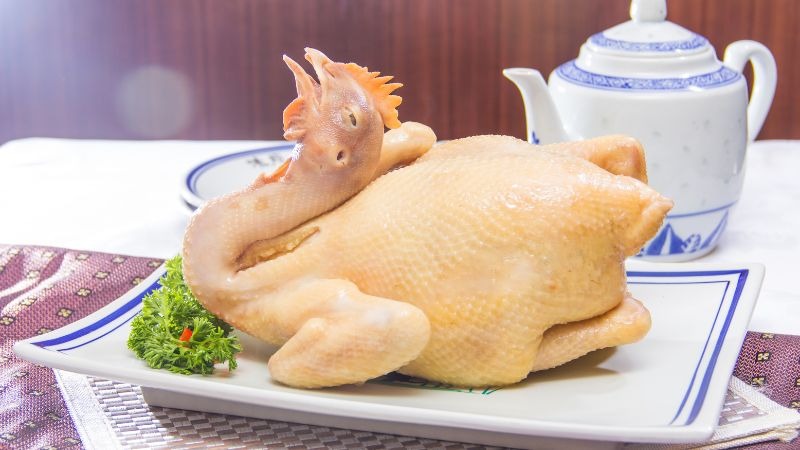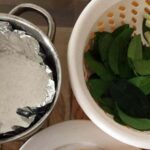Boiled chicken is a popular dish among Vietnamese, often presented in ceremonial offerings. It is easy to prepare and doesn’t require much effort.
With just a few simple steps and a short 20-30 minute wait, you can have a delicious plate of boiled chicken. This dish is commonly used to treat guests and is especially popular in the Mekong Delta region of Vietnam. While it is a simple dish, not everyone can boil chicken to perfection, achieving that desirable golden color with intact skin.
How to Boil Chicken with Salt and Soy Sauce
Prepare the Ingredients
Get a fresh or frozen chicken. After cleaning and gutting it, rinse it thoroughly and let it dry. Clean the scallions and ginger, then finely chop the scallions and cut the ginger into thin strips.
Marinate the chicken: Place the chicken in a pot and pour just enough cooking wine over it, rubbing it all over. Stuff the chicken’s cavity with some scallions and ginger strips. Sprinkle the remaining chopped scallions and ginger on the outside of the chicken. Let the chicken marinate for 30 minutes to reduce any fishy smell and allow the flavors to permeate the meat.

Choose a fresh and tasty chicken, or thaw a frozen one.
Blanch the chicken: Place a pot on the stove, fill it with water, and bring it to a boil. Once the water is boiling, carefully lower the chicken into the pot, along with its neck, and blanch for 10 seconds before removing it. Repeat this blanching process three times.
Cook the chicken: After the third blanching, leave the chicken in the pot. Add the scallion, ginger strips, salt, cooking wine, and gardenia fruit to the pot to give the chicken a golden color. Simmer over low heat for about 10 minutes, then turn off the heat and let the chicken steep in the broth for another 15 minutes. Poke the chicken meat with a pair of chopsticks; if no red liquid comes out, the chicken is cooked.
Soak and cut the chicken: Once the chicken is cooked, remove it from the pot and immediately soak it in a basin of ice water for 3 minutes. This step helps tighten the skin and enhances the flavor. Once the chicken has cooled down, take it out and pat it dry, then use a sharp knife to cut it into small pieces and arrange them on a plate. Serve with your choice of dipping sauce.
Tips for Boiling Chicken and Maintaining Tenderness
To ensure the chicken meat remains firm and tender after boiling, as well as looking fresh and appetizing, try this trick: After boiling, immediately immerse the chicken in a large bowl of water with ice cubes.
Keep the chicken in the ice water until it has completely cooled down, then remove it and let it air dry. Finally, brush the chicken skin with a mixture of turmeric powder diluted in the chicken broth to give it a beautiful golden sheen.

To make the chicken meat firmer and more tender, as well as enhancing its appearance.
To achieve crispy and tender skin, make sure to fully defrost the chicken if it was frozen. Boil the chicken over medium to low heat to prevent it from falling apart. Avoid frequently lifting the pot lid during the process.
After boiling, immediately plunge the chicken into cold water and remove it to air dry once it has cooled down. This technique will give you that desirable crispy and tender skin.
“Boil Chicken in Plain Water? Try This Instead for Tender, Flavorful Meat”
With just a few easily accessible spices, such as onions and ginger, you can create a mouth-watering boiled chicken dish that will have your taste buds doing a happy dance. This simple yet flavorful dish is a testament to the power of a few well-chosen ingredients, transforming the ordinary into something truly extraordinary.
The Culinary Magic of Lemons
Sure, I can assist you with that.
“You probably already use lemons to make refreshing summer drinks, but did you know they have a multitude of other uses in the kitchen? From preventing fruit discoloration to cooking vegetables and even peeling eggs, lemons are a true culinary multi-tasker. You’ll be amazed at the versatility of this citrus fruit and how it can enhance your daily cooking.”






































